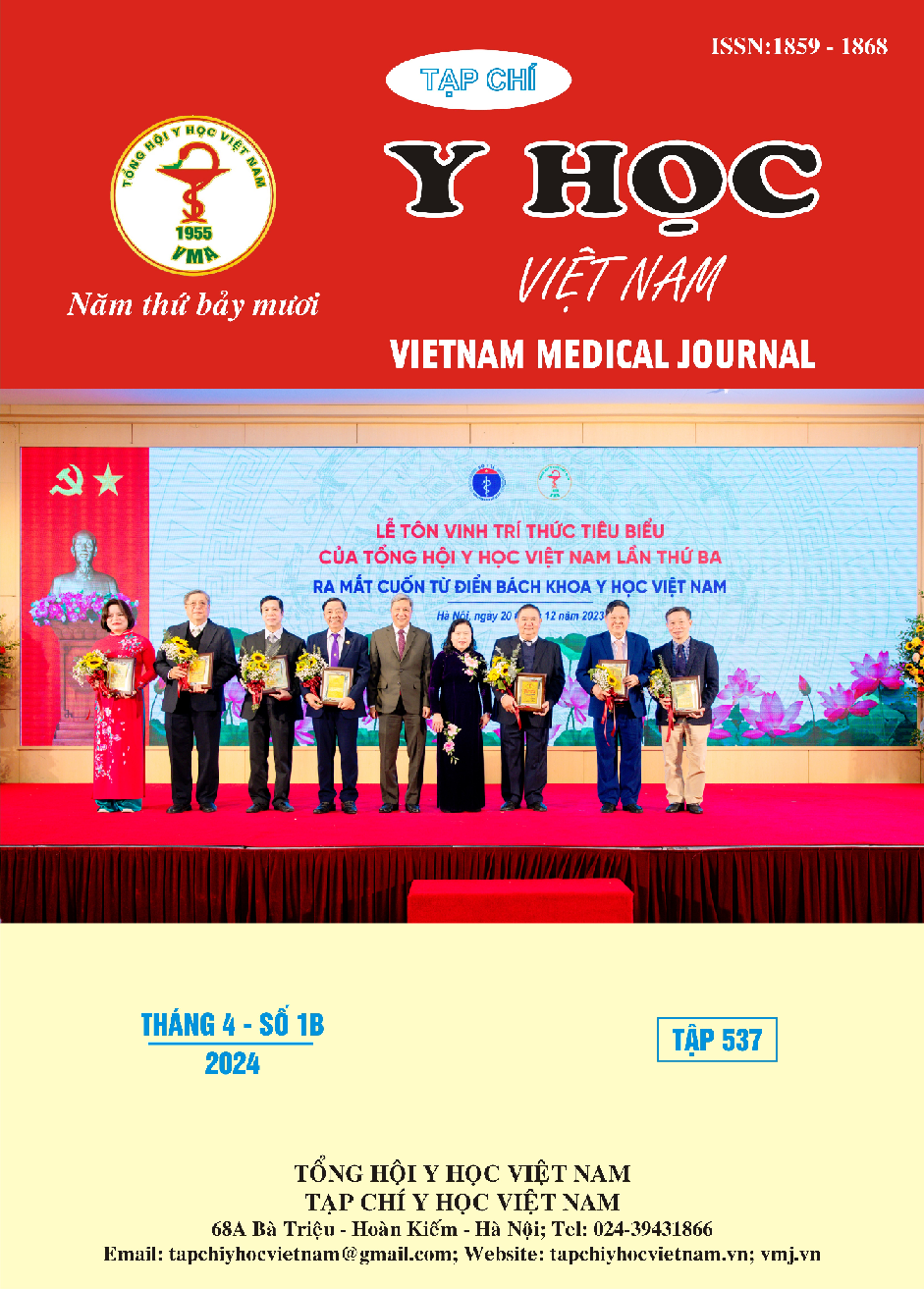EVALUATION OF THE RESULTS OF USING FLAPS IN PLACE OF TREATMENT SOFT PART DEFECTS AFTER FACIAL TUMOR REMOVAL AT NGHE AN GENERAL HOSPITAL
Main Article Content
Abstract
Objective: Evaluate the results of using local flaps to treat soft tissue defects after facial tumor removal at Nghe An General Hospital. Methods: The study included 34 patients with soft tissue defects in the facial area after tumor resection and reconstructed with local flaps at Nghe An General Hospital from January 2017 to November 2022. Results: Results showed that 7 days after surgery: 91.18% of patients had complete living flaps; 8.82% of flaps were mildly malnourished. 100% of patients had facial defects covered after surgery. 97.06% of patients healed immediately after the first surgery; 94.12% of patients had no complications and 94.12% of patients were assessed to have good results after surgery. Evaluation of 3-month surgical results showed that: 94.12% of patients had uniform color results between the surgical area and the skin of other areas; 100% of patients had flaps that were thick enough and healed well and 94.12% of patients had good results 3 months after surgery. Conclusion: Surgery using local flaps to treat soft tissue defects in the facial area after tumor removal brings great results in terms of eye function, appearance, and quality of life for patients.
Article Details
Keywords
Local flap transfer, patients with facial soft tissue defects, results of treatment.
References
2. Bạch Minh Tiến (2002), Luận văn thạc sỹ y học, ”đánh giá kết quả sử dụng Vạt trục mạch và vạt rãnh mũi má trong điều trị tổn khuyết phần mềm vùng mũi”, Đại Học Y Hà Nội, Hà Nội.
3. Glanz K., Schoenfeld E.R., và Steffen A. (2010). A randomized trial of tailored skin cancer prevention messages for adults: Project SCAPE. Am J Public Health, 100(4), 735–741.
4. Bùi Văn Cường (2016), Luận văn thạc sỹ y học, “Đánh giá kết quả phẫu thuật tạo hình tổn thương khuyết đầu mũi, cánh mũi”, Đại Học Y Hà Nội, Hà Nội.
5. Kim Y.J., Cho H.H., Kim S.O. và cộng sự. (2015). Reconstruction algorithm for nasal basal cell carcinoma with skin involvement only: analysis of 221 cases repaired by minor surgery. Clinical and Experimental Dermatology, 40 (7), 728–734.
6. Abbas O.L. và Borman H. (2012). Basal Cell Carcinoma: A Single-Center Experience. ISRN Dermatol, 1–6.
7. Kauvar A.N.B., Cronin T., Roenigk R. và cộng sự. (2015). Consensus for nonmelanoma skin cancer treatment: basal cell carcinoma, including a cost analysis of treatment methods. Dermatol Surg, 41 (5), 550–571
8. Nguyễn Quang Rực (2019), Luận văn thạc sỹ y học, “Đánh giá kết quả phẫu thuật tạo hình khuyết phần mềm kích thước vừa và nhỏ sau cắt bỏ ung thư da tế bào đáy vùng mặt”, Đại Học Y Hà Nội, Hà Nội.
9. Phạm Cao Kiêm (2006). Đánh giá các phương pháp tạo hình bằng tổ chức tại chỗ trong điều trị ung thư thế bào đáy ở đầu mặt cổ theo phẫu thuật Mohs.
10. Bozan A., Gode S., Kaya I. và cộng sự. (2015). Long-term Follow-up of Positive Surgical Margins in Basal Cell Carcinoma of the Face. Dermatol Surg, 41 (7), 761–767


